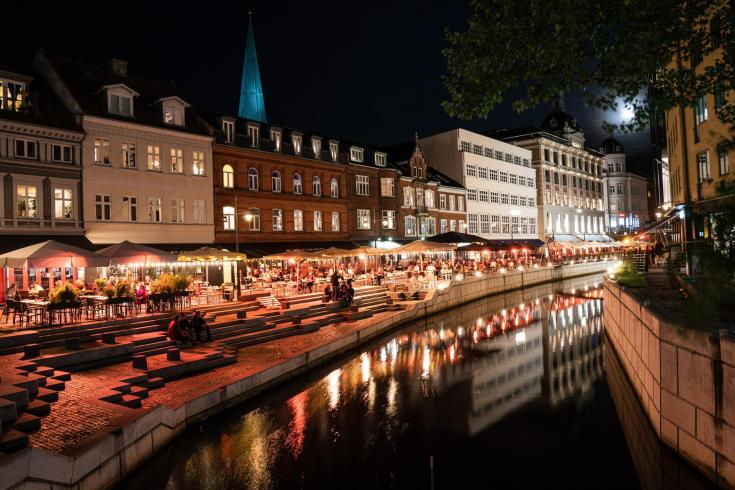Rivers are high on the EU policy agenda like never before. For 2030 the EU has put forward ambitious plans to restore at least 25,000 km of free-flowing rivers, shift to inland waterways part of the 75% of inland freight currently transported by road, and enhance blue-green infrastructures as ‘no regret’ solutions for climate adaptation .
In parallel, momentum is building around Europe for a particular phenomenon: the ‘daylighting’ of urban waterways . Among others, the City of Milan is currently seeking to implement a 2018 project to restore parts of its canals dating back to the Middle-Ages, the so-called ‘Navigli’, and the Brussels Capital Region announced in late 2020 its intention to uncover 560 meters of the buried Senne river in the context a wider urban greening project . In both cases, forgotten streams would come back to life, partially reclaiming the space once given away to urbanization and the dominance of road transport.
With good practices on daylighting, the Interreg Europe WaVE project on the valorisation of the water-linked heritage may be a great source of inspiration for these future developments.
Water as a driver of urban regeneration Between 2007 and 2008 the Dutch City of Breda successfully restored the Mark river and its harbour, which had been covered from the 1940s onwards to make space for parking lots . Those interventions are now being supplemented by a project to turn ancient quays into ‘Green Quays ’, where nature-based solutions will help flora and fauna to thrive on water in the urban environment. Once completed, this project would further improve quality of life and climate resilience in the Inner City of Breda, building on the increased attractiveness and economic results already achieved through the reinstatement of the Mark river and harbour. In a similar fashion, also the Danish City of Aarhus became more vibrant and dynamic thanks to the daylighting of the river that flows through it.
Overturning the choices of the past Just like Navigli in Milan, the Senne in Brussels and the
Mark river in Breda, the Aarhus river used to serve multiple purposes before its cover-up was completed in the mid-1950s: from internal navigation to providing freshwater to wash clothes and quench cattle’s thirst. The growing of urban population and industry at the turn of the two World Wars transformed the river into a sort of ‘open air sewer ’, a circumstance that eased the decision of the City to channel it into a large underground pipe , thus paving the way for motorised road transport.
Phillip Fangel, Archivist at the City of Aarhus, remembers that while the burying of the river was initially welcomed, calls to reopen it started to be raised already in the mid-1970s:
“At first the City benefitted from the surge of functionality that the new central ro ad provided. Many people were happy to see Aarhus becoming a modern city with increased traffic and residential buildings along the covere d river. This kind of redevelopment came with a sacrifice though. Valuable heritage along the river including characteristic bridges and industrial buildings were either disma ntled or demolished. However, when the City decided to replace the Saint Clement Bridge in downtown with a new one fit for the transit of heavy trucks perceptions began to change: in that moment, the bridge renovation brought back to sunlight a small portion of the buried river”.
The episode triggered a large debate that culminated in the 1989 decision to daylight what was covered-up half a century earlier. The actual project was carried out eventually from 1992 to 2015.
Newfound river and better habitat
The daylighting earned national and international accolades as an excellent example of sustainable urban planning and sparked interest in Copenhagen, where local groups advocate for the uncovering of the Ladegårdsåen , a piped canal underneath one of the busiest roads of the Danish capital. Thanks to the daylighting of its river, Aarhus revamped a ‘blue-green’ infrastructure right in the heart of its historical center, gained recreational spaces for pedestrians as well as a brand new stretch of lively restaurants and cafes that became very popular among locals and tourists.
According to Phillip Fangel, these are only the most visible benefits of the newfound river: “Besides less cars, more green and a renewed allure, the urban regeneration linked to the river brought us also a modern and effective water management system that is fully integrated into our cultural heritage ”.
With two artificial lakes, a couple of large underground reservoirs for wastewater and a sluice system at the mouth of its river, Aarhus is now better protected against floods and more climate resilient .
For more inspiration and information:
by Phillip Fangel (WaVE project)
The WaVE video on the Aarhus river
The video on the Aarhus river project (Aarhusvand )
Interreg Europe Policy Brief on ‘
Interreg Europe Policy Brief on ‘

